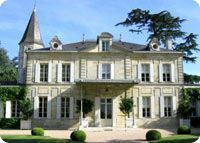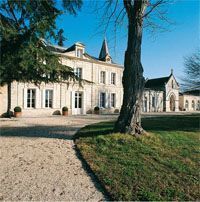 | Cheval-Blanc fell prey to a joint investment from LVMH, the luxury goods group that peddles handbags, perfume and Champagne, which is headed up by Bernard Arnault, and from Belgium’s richest businessman Albert Frère. They installed Pierre Lurton, Lurton being a name synonymous with Bordeaux, as estate manager; Lurton now divides his time between Cheval-Blanc and his other chief property, Château Yquem. Obviously, with a corporate take-over and the estate now at the mercy of the accountants, we can expect a deterioration in quality, can we not ? Not at all, the wines turned out by Cheval-Blanc remain as desirable as ever. The Cheval-Blanc vineyards, and the property itself, border those of Pomerol; Cheval-Blanc’s most intimate neighbour is Chateau L’Evangile, a Pomerol property, which lies just across the road. |
| The vines, which are 57% Cabernet Franc, with the balance mostly Merlot, augmented by a little Cabernet Sauvignon and Malbec, lie on three principle terroirs; a blend of gravel and sand over much of the vineyard, a large area of sand and clay over a compact blue clay, whilst a smaller proportion of the estate is sandy-clay with iron deposits. The vines are aged over 30 years on average, and there is a conscientious approach to vineyard management. After malolactic fermentation the wine goes into oak, naturally 100% new, where in the case of the grand vin, Chateau Cheval-Blanc (typically 6000 cases per annum), it matures for 18 months. The second wine, Le Petit Cheval (typically 2500 cases), will not see such an extended period in oak, with a year a more typical maturation period. |  |